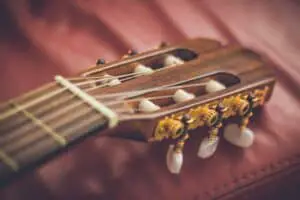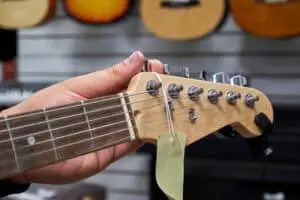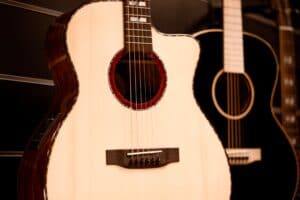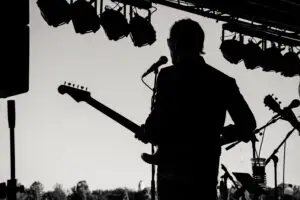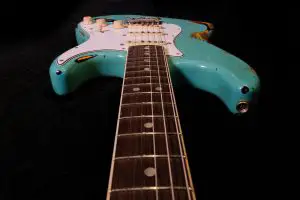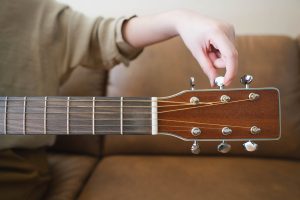
As a complete beginner, it’s okay not to know where to start. You don’t need to beat yourself up about it. Learning guitar involves knowing chords, scales, songs, etc., so it’s easy to get overwhelmed. If you’re starting, you only need to learn the basics of the guitar.
As you reach intermediate or advanced levels, what you practice on the guitar will entirely depend on your musical goals. If you want to specialize in playing heavy metal, surely you won’t be spending your time on jazz or country music.
For beginners, the basics are pretty much the same regardless of the style of music you want to learn. So what should you practice on guitar?
It would be best if you practiced reading guitar tabs, learning chords and easy tunes, training your hand to strum and hold the guitar well, and the basics of music theory and scales.
Here’s an extensive breakdown of what to practice on a guitar for beginners.
- Learn To Read Guitar Tabs
- Practice Open Major and Minor Chords
- Practice Chord Changes
- Train Your Fingers To Pick and Strum
- Learn Easy Tunes
- Learn Songs
- Practice Phrasing Techniques
- Practice Guitar Riffs and Licks
- Learn the Basics of Music Theory
- Learn Scales
- Practice Barre Chords
- How To Effectively Practice Guitar
- Conclusion
Learn To Read Guitar Tabs
Many guitar instructors teach their students how to read standard music notation first. This doesn’t seem right because it can make you quickly lose interest. Start with learning to read tabs instead because it’s the basis of your musical journey.
You don’t need to learn standard music notation to play the guitar. Every song written for the guitar is available in tabs. Guitar tabs are also easier to learn.
Practice Open Major and Minor Chords
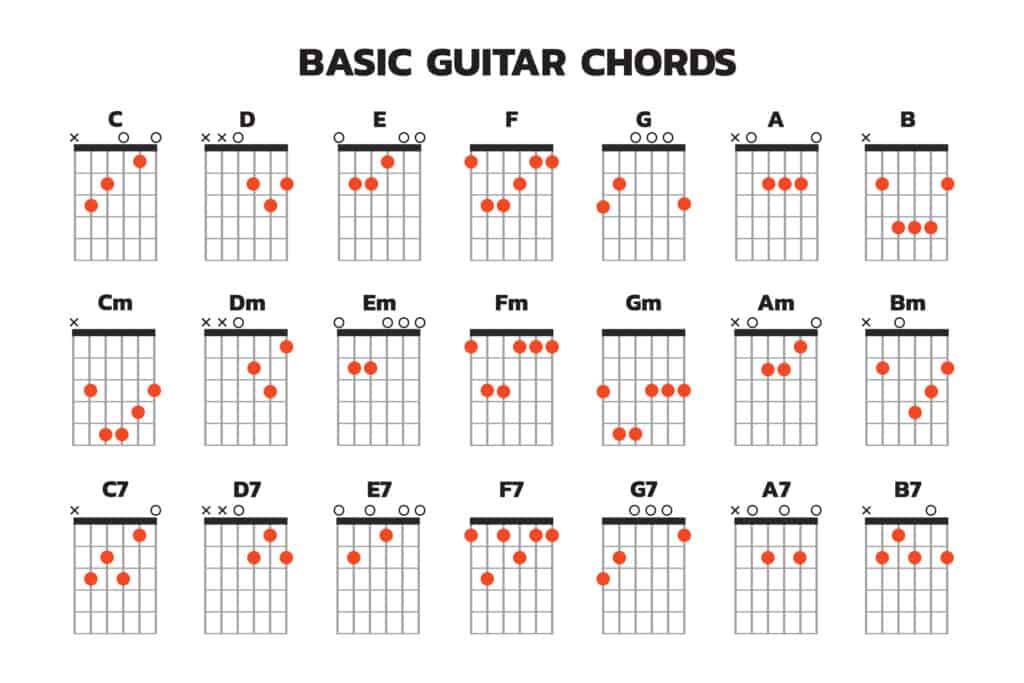
Open chords mean that at least one note is not fretted by any finger. They are much easier to play than barre chords. Popular open major and minor chords you can play on the guitar are the C, A, G, E, D, Am, Dm, and Em chords. Many Pop and Rock songs use only these few chords, so you can start with them.
Note that not all major and minor chords can be played as open chords; therefore, you’ll still have to learn barre chords down the line.
Practice Chord Changes
Knowing how to play the chords isn’t enough; if you want to play songs, you’ll have to learn to change from one chord to another easily.
After learning the eight chords mentioned above, spend time practicing them until playing them becomes second nature. Change between the chords slowly at first. If you repeat it a few times, you’ll notice your speed increasing.
Train Your Fingers To Pick and Strum

Whether you strum with your right or left hand, you need to practice picking and strumming chords. Practice picking each string so you can quickly go to the intended string when you play.
On the other hand, learning to strum chords isn’t as challenging as picking the strings. You only need to find what works best for you. Trying strumming with and without a pick, use different strumming patterns, and test different fingers to know what you’d like.
When practicing to pick and strum, don’t change chords. Leave all the strings open until you can strum steadily and in time. Changing chords while strumming will divide your attention, and you’ll only distract yourself.
Learn Easy Tunes
After you can strum and change chords fairly well, the next step is to find some easy tunes with melodies you already know. These tunes might be “Sound of Silence,” “Ode To Joy,” and “Can Can.”
With your knowledge of guitar tabs, these tunes will help you get familiar with chord changes, and your fingers will start getting used to the guitar neck.
And the cherry on top, these songs will help you develop muscle memory. With regular practice, you’ll quickly remember the locations of notes and chords off-hand.
Learn Songs
Tunes are only a warm-up to build muscle memory and help you master guitar tabs. After you learn to play a few tunes, you can start learning your first songs.
Easy beginner songs that use a few chords include ‘Day Tripper’ by the Beatles and ‘Knocking on Heaven’s Door’ by Bob Dylan.
Finding your first songs shouldn’t be an issue. With the knowledge you’ve acquired, you have a ton of options.
Practice Phrasing Techniques
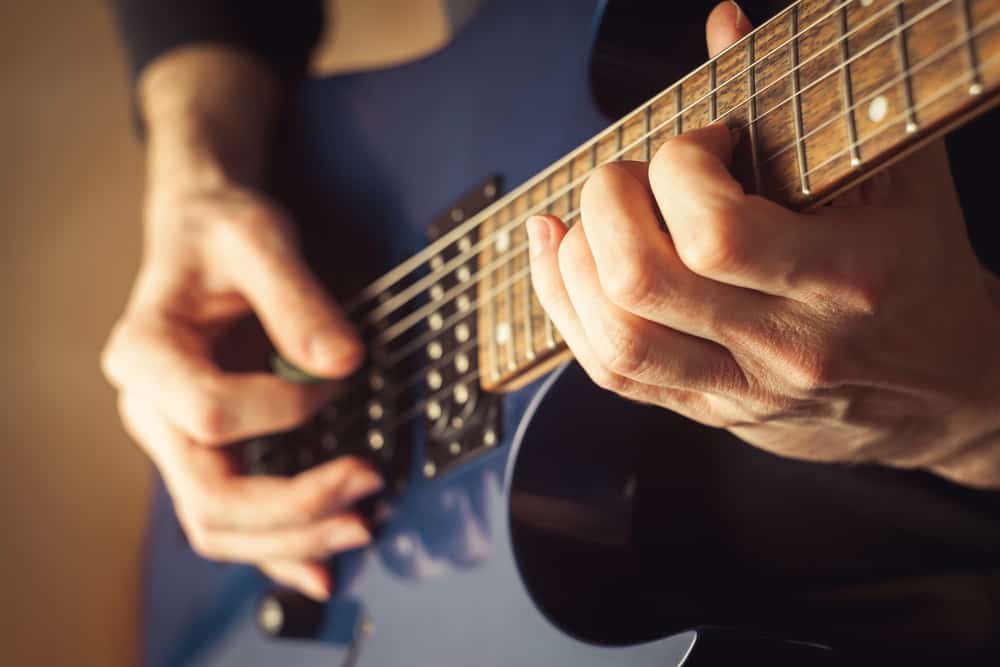
Guitar phrasing techniques like string bends, hammer-ons, pull-offs, and vibrato are used to get different sounds from the same notes you play.
These techniques give life to your music and help you play better so learning them isn’t a waste of time.
Practice Guitar Riffs and Licks
Start with easy guitar riffs and licks, then increase the difficulty level. Learning riffs will help you play better, but you’ll also get many ideas you can use to create your own riffs, licks, and solos.
Learn the Basics of Music Theory
All the steps mentioned above will take weeks or even months to perfect. But after you learn chords, songs, licks, riffs, and solos, your work isn’t done yet.
Learning music theory will not only help you be a better guitar player but learning other instruments will also be easier for you.
Learn Scales
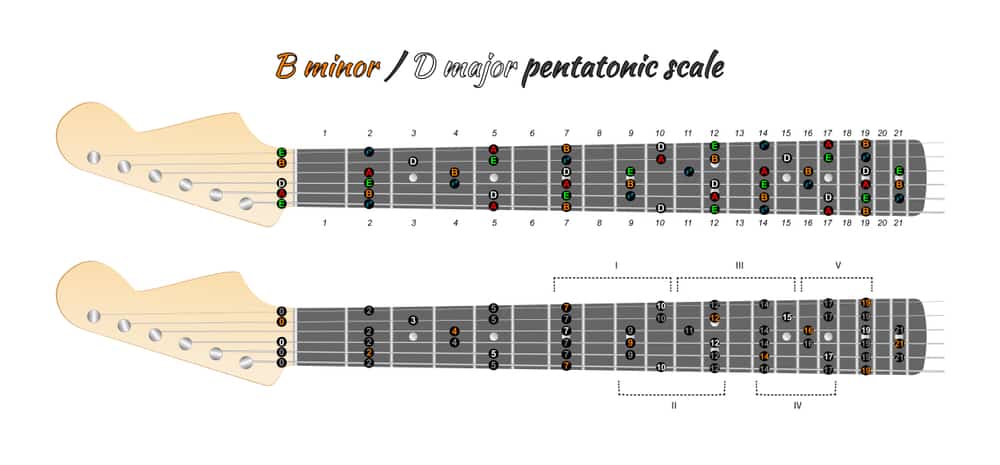
Scales are essential components of the music-making process. With music theory, you’ll understand the role scales play in music, and you can learn your first scale. An excellent suggestion is the minor pentatonic scale.
After you learn this scale, you can practice scale sequences and even come up with guitar licks before moving on to another scale.
Practice Barre Chords
Beginners struggle with barre chords because they require finger strength and dexterity. Having passed all the stages above, barre chords won’t be too challenging.
How To Effectively Practice Guitar

Every time you pick up your guitar to practice, you need to get the most out of your practice. Here are things you should do before, during, and after practice for the best results.
1. Tune Your Guitar
Many beginner guitarists make the mistake of playing with an out-of-tune guitar. Although you don’t have to tune your guitar before every practice session, it helps to tune it regularly.
Playing your guitar in tune lets your ears get used to the pitch of the notes and chords. So whenever you want to practice, check if your guitar is in tune before you start. You can use either a physical or online tuner. Both work just as well.
2. Warm-Up
Immediately you pick up your guitar, you’ll be tempted to dive right into a song, but warm-up exercises are worth the time. Finger dexterity exercises prepare your fingers and improve your accuracy in picking, fretting, and strumming.
3. Push Yourself
If you show up every day practicing the same songs or chords, you’ll develop the skills slowly.
Try playing challenging licks and chords until you adapt. As you challenge yourself, you’ll get better faster.
4. Record Yourself
Try recording your regular practice session and listen back to it later. You may notice poor timing and other mistakes. Recording yourself helps you correct your mistakes.
5. Clean Your Guitar and Strings
Caring for your guitar ensures it doesn’t wear out quickly. After practice, use a cloth to clean your strings and the body of your guitar. This helps to keep your fretboard clean and extends the lifespan of your instrument.
Conclusion
Learning the guitar can be frustrating, but you’ll reap the rewards quickly with proper practice. Remember to forget about perfection. Instead, focus on making progress with each practice session, and you’ll evolve into a great guitarist in no time.

